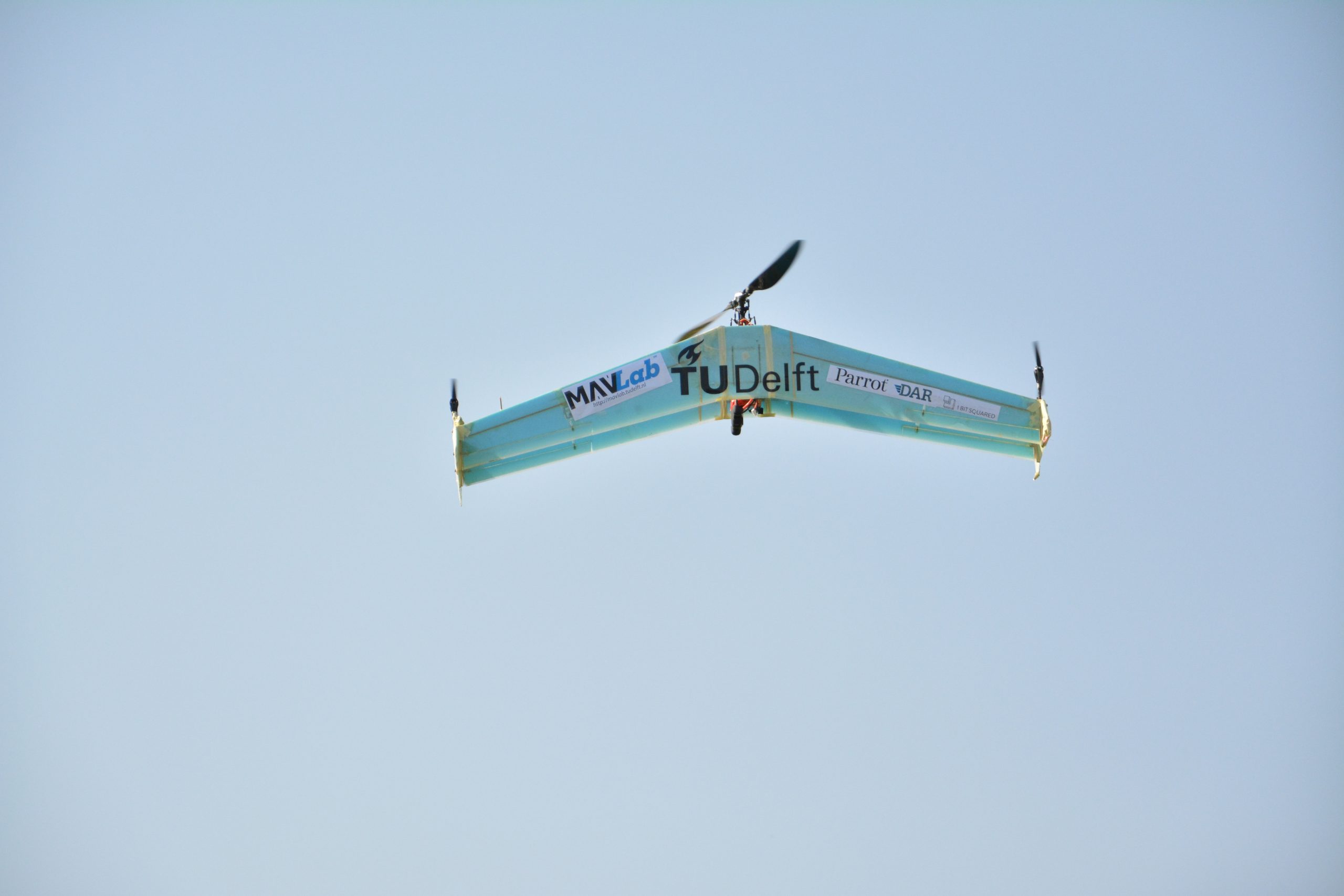Saving Outback Joe, that was the goal of the Medical Express Challenge in the Australian wilderness.Delft drone delftAcopter took off smoothly, spotted Joe and then – crashed.
Researchers at TU Delft have developed new technology that enables a drone to record all stationary and moving objects (such as trees, masts, birds of prey, helicopters) during autonomous flight, and continuously alter its flight path. (Photo: MavLab)
Researchers at TU Delft have developed new technology that enables a drone to record all stationary and moving objects (such as trees, masts, birds of prey, helicopters) during autonomous flight, and continuously alter its flight path to avoid them.
The technology was put to the test this week during the international UAV Medical Express Challenge in Australia (from 24 to 28 September). The aim of the new technology, which one day might be used in medical emergencies, for instance, is to make autonomous flight in drones more affordable.
Outback Joe
The UAV Medical Express Challenge in the Australian wilderness revolves around virtually ‘saving’ Outback Joe, a person trapped in a flooded area in Queensland. Outback Joe is not feeling well, and after consulting his doctor, the decision is made to take a quick blood sample for testing. The team’s mission is to get the sample, which Joe can take himself, to a lab quickly.
Participating teams are given approximate details of Outback Joe’s location, around 30 km away. The drone has to find Joe and land as close as possible to, but no nearer than 30 m, to him. Joe has to give the blood sample to the drone which will take it back to base for medical analysis. All of this needs to happen within an hour.
What is new this year is that the drone must fly completely autonomously in a large area with no-fly zones, including dynamic no-fly zones which may contain objects such as a moving helicopter, a hot air balloon or a large bird of prey.
‘The take-off seemed very straightforward’
“The set up [of the Delft team] went smoothly and the take-off seemed very straightforward,” the UAV challenge’s organisation wrote last week on its website. “The team even brought some lunch to have while waiting for their aircraft to complete the mission.”
A technical issue with the GPS location feed they were supplying to the judges meant that the Dynamic No Fly Zone part of the competition could not be fully completed, although the aircraft was seen to be avoiding obstacles as it transited past the Base.
Once at the farm, the aircraft automatically detected Joe’s target and initiated its landing sequence. “But then disaster struck! As it slowly descended, the main rotor switched off prematurely, roughly 1.5 m above the ground, and the aircraft fell to the ground. The impact broke the wing structure. The judges at the farm immediately declared that the aircraft was not fit to take off again and so the mission was over.”
Bart Remes, head of the TU Delft lab (the MAV Lab) that developed the drone, was not available to respond due to the time difference.
The crash must have been a great dissapointment. “We have done a great deal of research in Delft with drones that identify obstacles and fly around them (or, sometimes, pick them up),” Remes earlier explained in a TU Delft press release. “The drone uses its own speed and direction (vector) and the vectors of all other moving objects in the area, and continuously uses this input to decide on the best flight path. Drones can only be of real help in medical situations and emergencies if they are able to fly safely, autonomously and economically.”
Tilting 90 degrees
The team in Delft developed a hybrid delftAcopter that takes off like a helicopter before tilting 90 degrees and then continuing to fly like an aeroplane. The drone does this using a single large propeller, which means that it has hardly any unnecessary control surfaces on board when in flight. This makes the small, unmanned aircraft suitable for providing medical aid in difficult-to-reach areas, for example. The delftAcopter was first tested at the previous UAV Medical Express Challenge in 2016, where it took second place.
Do you have a question or comment about this article?
tomas.vandijk@tudelft.nl


Comments are closed.